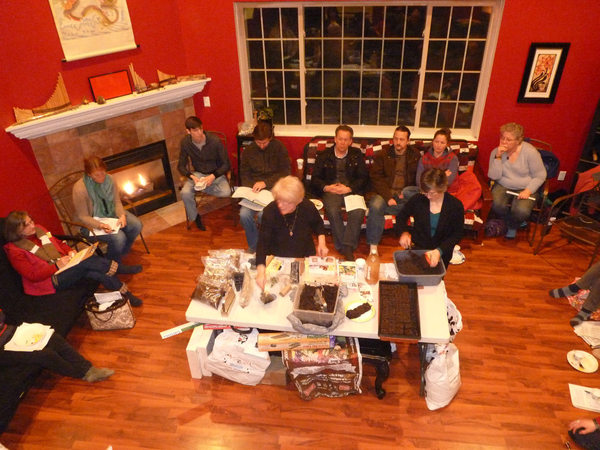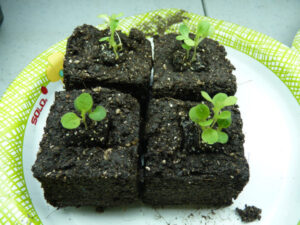I think community and community building should be a critically important part of any sustainability efforts. When I first became interested in sustainability and permaculture, I checked a bunch of books out of the library and set to reading and studying the concepts. Then I applied said concepts at my own property, and looked to see the results. I did volunteer at a local organic garden that was owned by a friend of mine and that grew most of its produce for a local food back. Despite this volunteering, I still felt quite isolated—not just away from others who were like me who were doing similar work, but also from the localized knowledge that can’t be found in any organic gardening or design book.

About 10 months ago, a few friends and I decided that we needed a way to bring people in the community together and so we formed the Oakland County Permaculture Meetup group. Our goal of the group was to base a community in the principles of permaculture, to build a more “permanent culture” in our community. We wanted to bring people together, talk about sustainability, gardening, and related subjects, ask people to share their knowledge, and so forth. These kinds of activities are particularly important because in America, we tend to keep ourselves isolated and focus on individualistic qualities (for a great discussion of this, see Hosfede’s cultural dimensions). Isolation isn’t going to solve any problems nor create communities that can effectively navigate the coming end to the industrial age (the long descent, to use John Michael Greer’s terms).
We used Meetup.com because it was an established site and had tools we needed (like scheduling, discussion boards, and resource areas). We also created a Facebook group for more general chatter and discussion. We posted our meetup in late July and my friends advertised it to their listserv (they run a small permaculture design firm). A week later, over 30 people showed up with ideas, inspiration, and the same needs we had—for a community.
We followed the lead of similar groups around the country and established multiple kinds of activities for the group:
A) Skill shares – During our monthly meetings, these are short lessons ranging from 15 minutes to an hour where one or more members shares information or skills with the group. This contributes to the group’s collective knowledge and educates all. So far, we’ve had skill shares on fruit tree pruning, fruit tree grafting, soil blocks and seed starting, vermicomposting, seed saving, hoop house gardening/season extension, root cellar barrels (these two last topics might seem familiar to blog readers—I taught on these subjects!)

B) Special Interest Groups. We established “special interest groups” based on members’ interests, also to take place during our monthly meetings. We originally had a number of special interest groups, such as primitive skills, organic gardening, foraging, alternative energies, food preservation, and so forth. What we found is that the groups only functioned effectively with a leader; and when we established the groups, the group was quite young and we really needed more time to understand who our “regular” members were going to be. So these “SIGs” are still not as functional as we’d like them to be, but I think that now that the group is more mature, we can revisit them.
C) Permablitzes: One of the main functions of the group is the permablitz, an activity where a member of the group asks others for help on a particular project. It’s part work day, part educational project. Our first few permablitzes included frost seeding, a permaculture design installation, and an organic gardening day. We weren’t able to do many of these yet since our group started in August and the winter months were soon upon us, but our goal is to do as many as we can in the summer months. D) Potlucks. Most of our meetings and permablitzes feature some kind of food; our regular monthly meetings feature a potluck where we share in the bounty of the local Michigan harvest.
E) Other activities. We’ve done a number of other activities, including a seed swap in the fall, a plant swap in the spring, a “taste and trade” where people brought various items to trade (canned/baked goods, homemade laundry detergent, etc) and food to enjoy. We are also working on establishing lists for tool shares, raw materials, etc.
F) Videos/Educational materials for the broader community. We also showed a video at one of our meetings, the Overview Effect. We intend on doing more video screenings in the future.
G) Documenting our efforts. A big part of what I’m trying to do is to document our efforts. I’ve recorded a few of our local meetups, and these are now posted on the web. I want to create a set of localized materials for our members–this will be a resource that goes beyond our group. Here are videos on Seed Starting/Soil Block Making and Vermicomposting! You can also see photos from the group here.

The power of this kind of community is incredible. We have elders in the group who freely share their knowledge, we have younger people who inject the group with enthusiasm and energy. We have those who are brand new, and those who want to learn, and all come together to grow and share. The friendships that I’ve gained through it are important and meaningful—the feeling that I’m “not alone” in all of this, that my concerns about the future and my need to “do something” are being met. And, in the end, that’s what it’s about—it’s about practical action. I feel the strong urge to “do something” rather than sit back and hope that someone else will solve the world’s problems. I can’t force my own country off its destructive path, but I can help build local communities that develop alternative ways of seeing the world, of interacting with our planet, and put systems in place to help us build a better world.



This should be encouraged in all communities.
Hear hear! 🙂
Nice site informative…cover. Crops for home garden in Oakland cty was what I was looking for..And I found You!
Glad to hear from you, Janis! I hope you come to the Permaculture Meetup sometime! Look us up! 🙂
[…] night, 35 members of the Oakland County Permaculture Meetup spent time looking at the site in its current form and brainstorming ideas for restoration once the […]